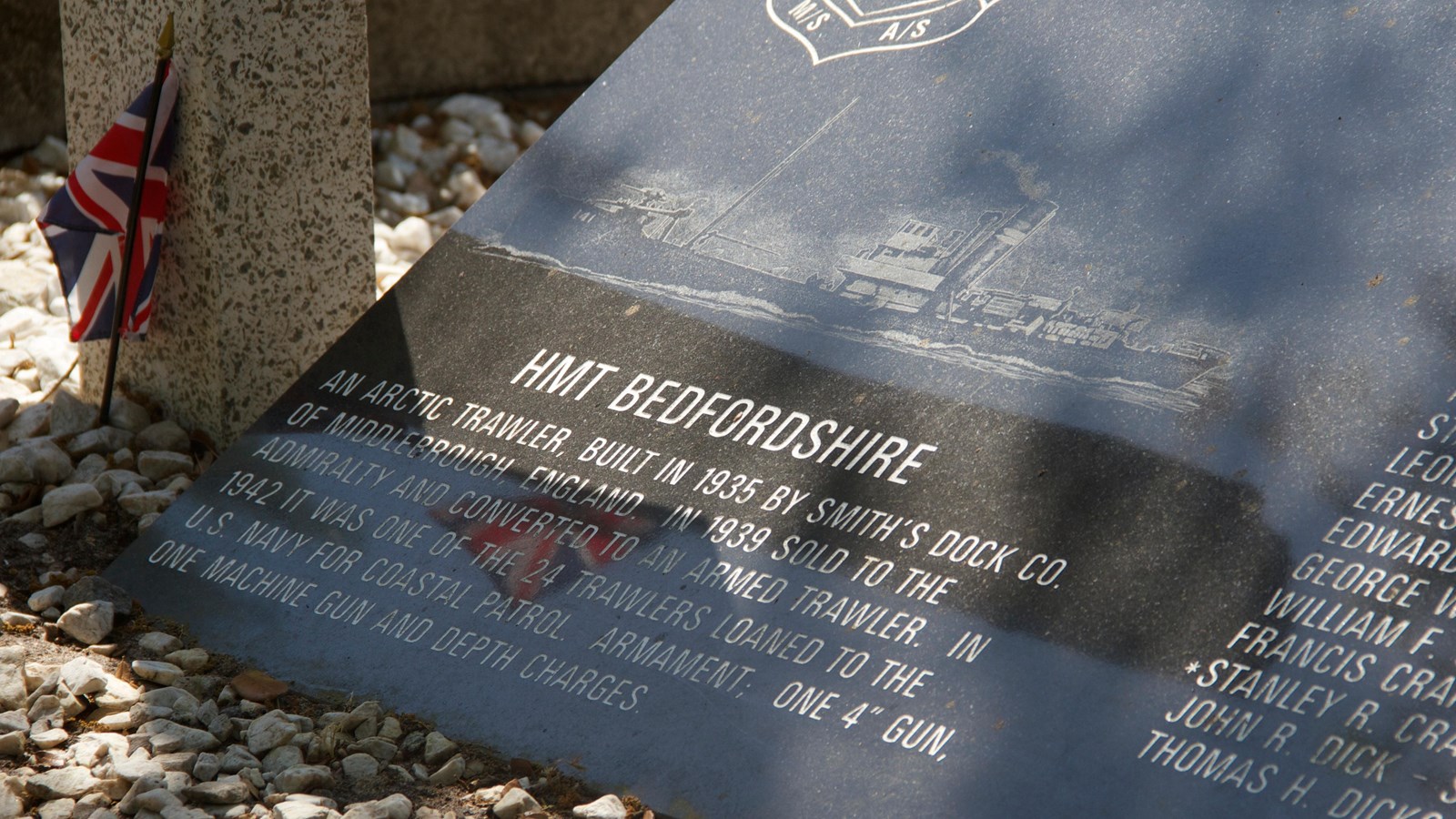Last updated: February 9, 2021
Place
Ocracoke British Cemetery

Historical/Interpretive Information/Exhibits, Parking - Auto
While out patrolling for German submarines off the North Carolina coast during World War II, the British ship HMT Bedfordshire was torpedoed on May 11, 1942 . German U-boat 558 fired a torpedo that struck HMT Bedfordshire in a manner that caused the vessel to sink almost immediately. All 37 British Royal Navy sailors were killed. In the following days, the bodies of four sailors washed ashore on Ocracoke Island and were buried in local cemetery plots by residents.
Every year, the National Park Service, the US Coast Guard, and the British Royal Navy have a ceremony at the site to honor the men who lost their lives in the attacks.
Operation Paukenschlag
On December 7, 1941, the Japanese surprise attack on Pearl Harbor thrust the US unexpectedly into active hostilities. It also compelled Germany's dictator, Adolf Hitler, to declare war on the US.
This declaration brought about a secret plan-code-named Operation Paukenschlag (English translation: Operation Drumroll)-for a swift, decisive submarine assault on the American eastern seaboard. The strategy, conceived by German Rear-Admiral and U-boat commander Karl Donitz, was to take advantage of poor American war preparations and strike at the vulnerable, merchant-rich sea lanes just off the Atlantic coast.
Initially, only five submarines were assigned to the operation, and as they began their stealthy voyage across the Atlantic in late December 1941, not even Admiral Donitz could foresee the success that these few U-boats would achieve.
Torpedo Junction
Meanwhile, merchant ships came and went along the coast as they pleased, one at a time, with their running lights ablaze and often without a zig-zagging course-a defensive maneuver which made torpedo attacks more difficult.
Conditions ashore were just as bad. No blackout restrictions were enforced, which meant that coastal lights provided a bright backdrop for passing ships and eased enemy targeting, lighthouses and navigational buoys remained lit, proper patrol aircraft were unavailable, and, despite warnings from their concerned subordinates as well as their adamant British allies (who had broken the German naval code), the American naval command seemed oblivious to the potential for impending disaster.
Disaster came promptly, nevertheless.
The U-boats-their crews seasoned by two years of war and with no American defenses to concern them-roved at will and struck with predatory precision. As a result, Allied merchant ships went down in staggering numbers. From January to June, 1942, a total of 397 ships were sunk in American-protected waters!
Off the North Carolina coast, where, as the U-boat commanders realized, Cape Hatteras served as a navigational focal point, so many merchant ships were sunk that captains referred to the area as "Torpedo Junction." Flaming tankers burned so brightly off the Outer Banks that on shore, it was said, one could read a newspaper by the glow at night, while the grim flotsam of war-oil, wreckage, and corpses-was strewn across local beaches.
